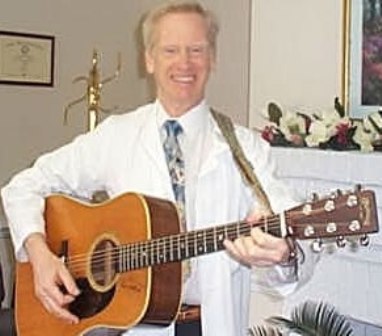“Yoga is the journey of the self, through the self, to the self”
Published on March 4, 2022

Dr. Steven Landau MD is a Board Certified Family Physician from USA and an acclaimed Yoga Guru who has students from across the globe learning the art of “Rajadhiraja Yoga”. A Senior Acharya with Ananda Marga Yoga Society, Dr Steven has is known as Pasupati. According to him “Yoga is not a work-out, it is a work-in. As Said in Bhagavad Gita Yoga is the journey of the self, through the self, to the self.” Dr Pasupati trains teachers in his Shiva Dancing School of Yoga, recognized by Yoga Alliance USA, of which he was a Board member for 6 years. His research on prison yoga showed decreased re-incarceration for those attending his yoga classes. The Yoga Guru in conversation with PNI News explains Rajadhiraja Yoga and its positive impact on human life.
As a Yoga Guru you are more focused on Rajadhiraja Yoga. How this method is different from other schools of Yoga?
Rajadhiraja Yoga was first introduced by Sage Ashtavakra. It complements As’taunga yoga in that it leads to the state of Nirvikalpa Samadhi. It has been modernized and taught by Gurudeva Shrii Shrii Anandamurti. It involves meditation on the Guru.
The purest part of Shaeva Tantra, which is beyond both Dakśińácára and Vámácára and was formerly to be learned in śámrájya diiksá [a kind of Tantric initiation] from a kaola guru [Tantric guru], is now included in Rájádhirája Yoga. Some of the subtler processes of Ananda Marga sádhaná bear a close relation to Rájádhirája. Maharśi Aśt́ávakra, while staying at Vakreshvar tiirtha [place of pilgrimage in Bengal], introduced Rájádhirája and gave the first initiation in that school to the young Prince Alarka. In Hindu Tantra, Buddhist Tantra, and Rájádhirája Yoga, this concept of Parashiva in the unmanifested balanced triangle of forces has been recognized implicitly or explicitly. Naerátma Devii of Kálacakrayána and Shúnyátma Devii of Kauṋkála-málinii Tantra are simply alternative names of Parashiva.”
Please explain Yogic Dances and its impact on Human-Body, Mind and Spirit?

Dance has been used since time immemorial to elevate mood and develop physical capacity. Lord Shiva introduced Tandava, a vigorous type of jumping dance, 7000 years ago, to help develop bravery for those who did Tantric meditation. It was until recently the only physical exercise to develop brain function, and it does so by its vigor, its airborne nature, and its crossing of the midline with the various parts of the body. It is a virilizing dance done primarily by men. Of course since it utilized mantra, the spiritual part is incorporated with the mental ideation and the extreme physical exertion involved. A nice introduction to Tandava can be found at https://www.youtube.com/watch?v=YwzEZ9a0_Hg
Shiva’s wife Parvati introduced Lalita Marmika, a swaying folk dance movement with the arms extended upwards, simultaneously involving rhythm of the feet and the sense of joy and surrender to the Cosmic. In doing this dance, the participants ideate on their ajina (sixth) chakra, and sing the mantra Baba Nam Kevalam (Only the Name of the Beloved). A simple introduction to Lalita Marmika may be found at https://www.youtube.com/watch?v=5j7cPuwvUrQ&t=35s

Can the Yoga be advised as a mode of therapy?
Anandamurtijii invented Kaoshikii, an aerobic asana session all by itself, involving all parts of the body, combine with rhythm and great coordination of the upper and lower parts of the body and mind. It is said to ameliorate 22 diseases, and was created in response to the ladies’ request for their own dance, in response to the introduction of Tandava for men. At the same time, men also dance Kaoshikii regularly with excellent results of body, mind and spirit.
You said you are training yoga online. Positions and Asanas are of great significance in Yoga. Will it be possible to impart perfect training on yoga postures through online classes?
Online classes are effective. They are often the only way people are learning yoga nowadays in the era of Covid pandemic. Using pre-recorded videos trainees can learn yoga at their own pace, and we combine these with live online sessions. Having said that, there is no substitute for in-person experience, which allows for multi-sensory physical and vibrational participation. We encourage in-person experience whenever possible. Some yogis do physical adjustments of students’ postures, which can be beneficial in good hands, and are detrimental in other circumstances. Yoga Alliance USA recommends against this practice, and we do not use it either, so the use of electronic teaching is not a limitation here.



















